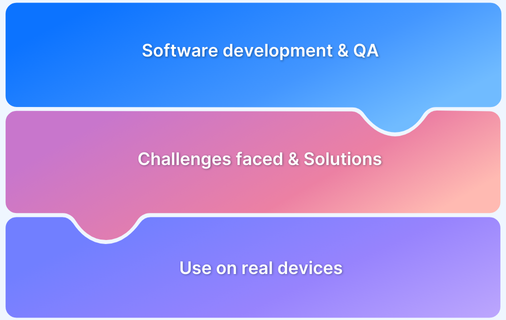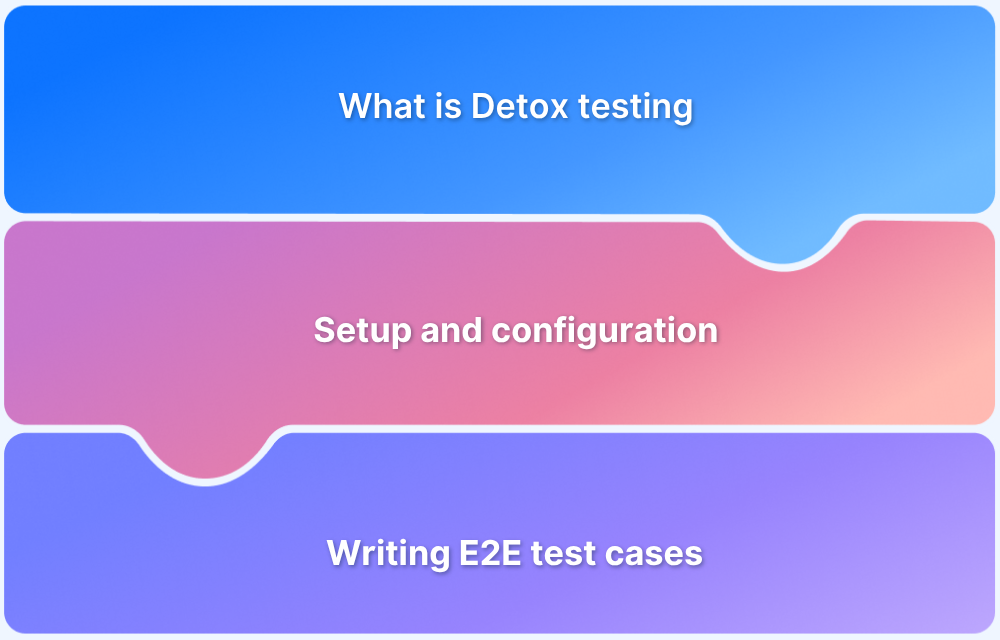4 Things Every New Software Tester Must Do
Shreya Bose, Technical Content Writer at BrowserStack - November 21, 2019
Thanks to the fact that the global population now lives digitally, every individual with an internet-enabled smartphone has access to the world. This means they have thousands, sometimes millions of options for anything they might desire. The internet and app stores are overrun with sites and app – anything a user wants, there’s an app for it. In fact, there are way too many apps for it.
Bugs and glitches don’t just contribute to a jarring user experience but can cause massive financial losses. A bug in Equifax’s server code affected over half the US population, resulting in shares of the credit-reporting giant falling 28%. In 2017, software failures resulted in financial losses worth US$ 1.7 trillion.
In such an environment, software testing is of particular importance. Developers cannot afford to release glitchy software since that leads to losing users and gaining negative reviews. The pressure to conduct proper and comprehensive tests can be overwhelming for a new software tester.
To help relieve some of that pressure, this article discusses a list of things that every new software tester needs to do and know in order to excel at their job. Think of this as a beginner’s checklist for smart software testing.
#1: Understand the Business Needs
Testing is not just writing test cases and scripts for automation. In fact, a tester cannot really write the right test cases without a clear understanding of how the software will serve the business. Testers might think that convoluted technical aspects require the greatest attention. But they might not be paying enough attention to features that add higher business value. It is important to remember that, depending on the target audience, non-technical aspects might be key to an app’s success.
For example, when creating banking software, functionality and security take precedence over visual appeal and UI. On the other hand, when designing a shopping website, color schemes and user navigation must be flawless. Before creating user stories, a tester must have perfect clarity on what the website or app intends to accomplish.
#2: Understand Targeted Platforms and Devices
One of the most important things for a tester is to know what devices users are most likely to access a website or app from. Given that the market is flooded with a variety of platforms and devices, optimizing a website or app becomes a key concern. Thanks to massive device fragmentation, users are likely to access a certain website through devices of varying screen sizes, resolutions, and technical specifications. One must keep in mind that successful responsive design is key to software success.
While it is humanly impossible to test for every possible device, testers must know the primary devices to run tests on. They must receive this information from the client, and it is important to have this conversation before deciding on a testing process. Receiving this data allows testers to shortlist which devices, platforms, screen sizes, browsers (and browser versions) and screen resolutions to create user stories and test cases for.
#3: Choose the Right Testing Tools
This might seem obvious, but no testing strategy works without the right testing tools. As far as possible, use testing tools or platforms that let you test on real devices. This is the best way to ensure software stability as it would allow the tester to detect any bugs or flaws that may emerge when being used by real-life users.
For example, when it comes to performing cross browser testing for a certain website, it is much safer to test it on real browsers instead of an Internet Explorer emulator or a Safari emulator. No emulator or simulator matches the experience provided by a real browser, simply because there will always be features that the former will not be able to replicate.
BrowserStack offers access to a vast real device cloud of 2000+ real browsers and devices for this purpose. Using its real device cloud for testing ensures certainty of results, and testers can be sure about what needs to be fixed every time. It also facilitates quick and seamless automated testing via an extensive cloud Selenium grid.
#4: Create the right User Stories
The point of a user story is to understand the user. By understanding the user, testers can make informed judgments about the motivation, preferences and the nature of their interaction with a website or app.
In Agile development, a user story describes in an informal, natural language how an end-user would view and interact with one or more features of a software system. It takes into account what type of user would use such software as well as what they want out of it. Think of it as a simplified version of a product requirement.
Testers need to be able to create solid user stories so that they can decide which tests to initiate. By knowing how a user is likely to engage with a website or app, they can create test cases that specifically target those features and user journeys. This narrows down the scope of testing and makes it more effective.
The points mentioned above are the very basics of successful software testing. When starting out, every tester must pay close attention to ensure these aspects are taken care of. Excelling at these four things strengthens a software tester’s foundation, and equips them to optimize and innovate as they see fit.



